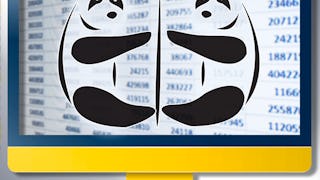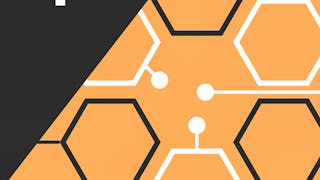Become proficient in NumPy, a fundamental Python package crucial for careers in data science. This comprehensive course is tailored to novice programmers aspiring to become data scientists, software developers, data analysts, machine learning engineers, data engineers, or database administrators.


Data Science with NumPy, Sets, and Dictionaries
2,725 人已注册
包含在 中
您将获得的技能
要了解的详细信息

添加到您的领英档案
1 个测验,3 项作业
了解顶级公司的员工如何掌握热门技能

积累特定领域的专业知识
- 向行业专家学习新概念
- 获得对主题或工具的基础理解
- 通过实践项目培养工作相关技能
- 获得可共享的职业证书

该课程共有4个模块
This module, you will learn the basics of object oriented programming as well as how to use sets and dictionaries to store and work with data in Python. You will apply these concepts with Python to perform some mathematical operations and analytical tasks, including solving geometric problems with circles and counting words in a document.
涵盖的内容
10个视频5篇阅读材料4个编程作业
This module, you will learn how to utilize NumPy--one of the most useful Python packages we use in data science--as well as learn additional data structures, arrays, beginning with the simplest type of an array, a vector. With NumPy and your new understanding of vectors, you will develop histograms as well as analyze household income distribution data in the United States, drawing your own data-driven conclusions.
涵盖的内容
1个视频9篇阅读材料2个作业3个非评分实验室
This module, you will first learn how NumPy handles data in your program using views and copies of your data. You will then learn how to work with more complex arrays called matrices, as well as how you can subset, filter, and modify data in matrices. Finally, you will write your own programs to manipulate data matrices and report your results for a given dataset.
涵盖的内容
1个视频14篇阅读材料1个测验3个非评分实验室
In this module, you will learn how to use NumPy to summarize data from matrices (e.g., calculating averages, minimums, maximums, etc.) as well as how to begin to analyze and manipulate image data. You will also explore two new data science techniques: how to make your analysis of data matrices more computationally efficient (vectorization) and how to randomize data (randomization).
涵盖的内容
1个视频12篇阅读材料1个作业2个非评分实验室
获得职业证书
将此证书添加到您的 LinkedIn 个人资料、简历或履历中。在社交媒体和绩效考核中分享。
从 Data Analysis 浏览更多内容
 状态:免费试用
状态:免费试用University of Michigan
人们为什么选择 Coursera 来帮助自己实现职业发展




学生评论
19 条评论
- 5 stars
52.63%
- 4 stars
21.05%
- 3 stars
5.26%
- 2 stars
5.26%
- 1 star
15.78%
显示 3/19 个
已于 Aug 16, 2025审阅
The course was really very interesting and Was very Useful and The concepts was clear with Implementation
常见问题
To access the course materials, assignments and to earn a Certificate, you will need to purchase the Certificate experience when you enroll in a course. You can try a Free Trial instead, or apply for Financial Aid. The course may offer 'Full Course, No Certificate' instead. This option lets you see all course materials, submit required assessments, and get a final grade. This also means that you will not be able to purchase a Certificate experience.
When you enroll in the course, you get access to all of the courses in the Specialization, and you earn a certificate when you complete the work. Your electronic Certificate will be added to your Accomplishments page - from there, you can print your Certificate or add it to your LinkedIn profile.
Yes. In select learning programs, you can apply for financial aid or a scholarship if you can’t afford the enrollment fee. If fin aid or scholarship is available for your learning program selection, you’ll find a link to apply on the description page.
更多问题
提供助学金,










